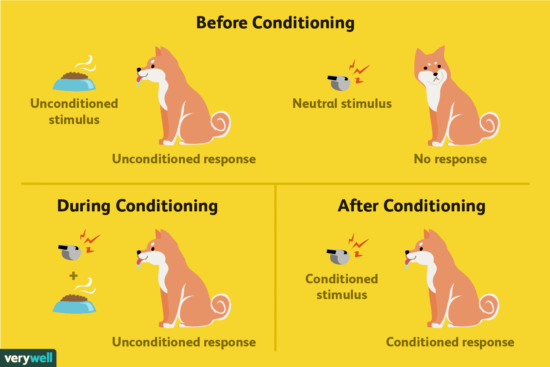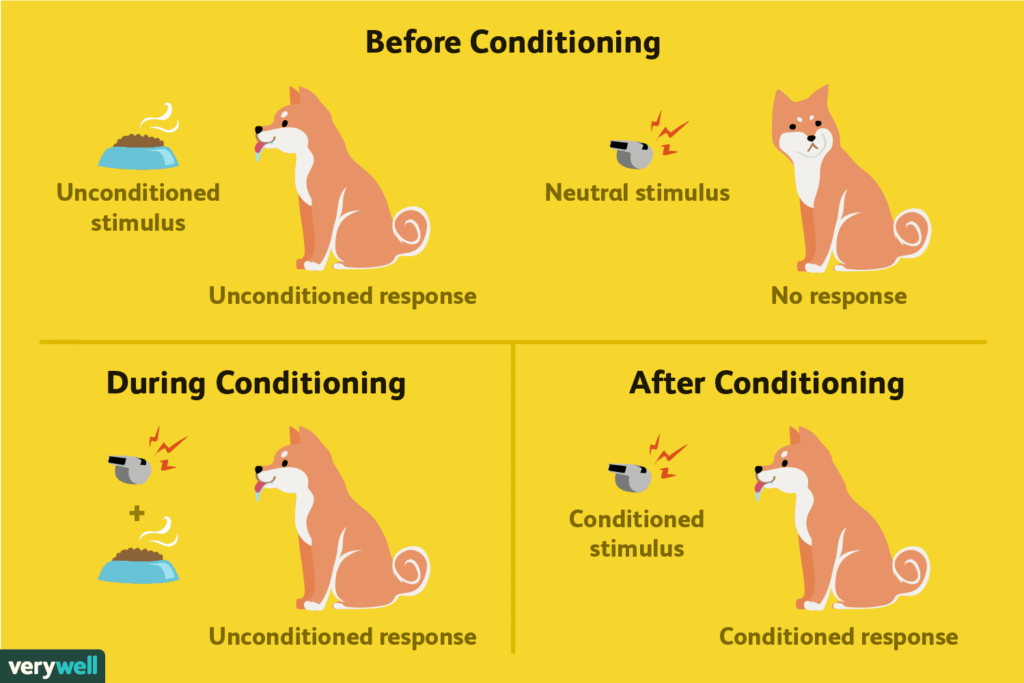Classical conditioning is the model which animals learn through predictive relationship between two or several stimuli (Wood, Wood, Boyd, Wood, & Desmarais, 2014). This process is considered the fundamental building block of the learning process and memory. Classical conditioning is a systematic model that would be crucial for neurobiological studies exploring the processes of learning and memorization. Under this model, the environmental inputs or stimuli are adequately defined, which ensures that they can be precisely controlled and the behaviour, response, or output can be accurately evaluated (Kim, Thompson, & Steinmetz, 2012). Almost all animal species have the ability of acquiring and retaining new information, as well as modification of behaviour through experience. This aspect shows that learning and memory are fundamental determinants and necessity for survival. Most of the recent biological and psychological studies have contended that knowledge is a multifaceted cognitive entity that could be divided into numerous informational systems that are sub-served by distinct brain structures. An adequate understanding of the neural and molecular mechanisms of memory would require the identification of various sites associated with a memory trace or an engram.
The concept of biological preparedness has been widely explored in studies on classical conditioning. This concept means that people and animals have an inherent inclination to create connections and associations between various stimuli and responses (Kendra, 2020). This concept is crucial in learning, especially when developing knowledge of the classical conditioning processes. The biological species create some associations easily because of their predisposition while others are more difficult to form because they are not naturally predisposed to form them. Some scholars have suggested that biological preparedness could be used to explain the phenomenon where some kinds of phobia are developed more easily than others. Different species are predisposed to developing fear for things or elements that threaten their survival. The species that learn to fear such dangers readily are highly likely to evade them, survive, and reproduce.
One of the practical cases where biological preparedness was operating in the classical conditioning process is in the formation of taste aversions (Kendra, 2020). For instance, when an individual eats a certain type of food and then develops a sickness afterwards, there are high chances that the person would avoid consuming such kind of food in the future even though the food may not have been the reason for the disease. The primary factor that influences individuals to develop a strong connection between taste and life experiences is biological preparedness. This aspect has most probably developed as a result of the evolution of survival mechanisms among individuals as well as other biological species. Biological preparedness influences individuals to develop fear associations with the threatening factors and risks within their living environments. It ensures that individuals avoid such possible dangers, which increases their chances of survival and thriving.

Most of the researchers on animal learning have traditionally held the assumption that it could be possible to discover general laws through intensive analysis of learning in random situations (Domjan & Galef, 1983). However, over past decades, such notions have raised numerous questions and criticism due to observations made in the learning phenomena that widely contradict the perceived general principles of association learning. Such observations have mainly appeared to be pointing to the biological constraints associated with instrumental or classical conditioning. Numerous suggestions have been made for the development of a new model for assessing the process of animal learning. The new tool would be integrated with broader considerations from ecological adaptation as well as evolutionary history. Biological constraints have been considered a leading issue in animal learning and have influenced the expectation that researchers and scholars would divert from their traditional approaches to evaluating instrumental and classical conditioning (Domjan & Galef, 1983). It was perceived that they would adopt more biologically-oriented strategies that focus on the possibility for the evolution of specialized mechanisms that ensure learning in crucial situations.
According to Domjan & Galef (1983), the concepts of biological constraints and adaptive specialization have had a significant impact in multiple disciplines. However, their use and focus in the recent studies of animal learning have revealed that biological revolution is a complex process that might be tricky to determine the timelines. Only a few cases have been discovered on biological influences on instrumental and classical conditioning. Therefore, a significant number of scholars and students continue to emphasize the general instead of the specific processes of forming associations. Biologically-based debates about the shortcomings of the traditional general processes learning theory have been advanced in multiple platforms. Different scholars have emphasized the evolution of specialized learning mechanisms that allowed biological species to cope with survival challenges, for example, diet insufficiency and predatory attacks. Researchers have also explored other instances where learning was hard or did not occur, even after the satisfaction of conditions expected to reproduce learning. Such failures have contradicted the predictions of the general process theory and challenged the conventional perspectives of efficient learning. Failures of learning in particular situations or contexts have often been associated with biological constraints to learning.
A significant number of discussions on biological constraints on learning have focused on identifying learning scenarios that contradicted the conventional principles of instrumental and classical conditioning. The inconsistencies occurring within the traditional learning theory are considered instances of biological constraints (Domjan & Galef, 1983). This aspect influences increasing levels of emphasis on constraint phenomena because the exceptions of the conventional laws of behaviour are evident. Instances of learning that violate the established principles result from situations that contain different sets and combinations of cues, responses, and reinforcers, among other elements. Situation specificity is an essential aspect in all discourses regarding biological constraints.
In conclusion, a significant number of instances and phenomena that are considered to be biological constraints are actually the result of adapting to particular challenges and threats to survival. The specific attributes of the issues that biological species have encountered when trying to determine their survival mechanisms in their living contexts, for example, by selecting foods have influenced the evolution of specialized learning mechanisms. However, not all instances of learning involve specialized adaptation and they could result from unique learning mechanisms attributed to other processes such as the nervous system, common issues facing a specific species, or the cost of evolving and developing specializations.
Our psychology writing team offer a wide range of services which are included but not limited to:
– Psychology Coursework Writing Help
– Psychology Dissertation Writing Service
– Psychology Essay Writing Service
– Psychology Dissertation Help
– Psychology Assignment Writing Service
– Psychology Essay Writers







